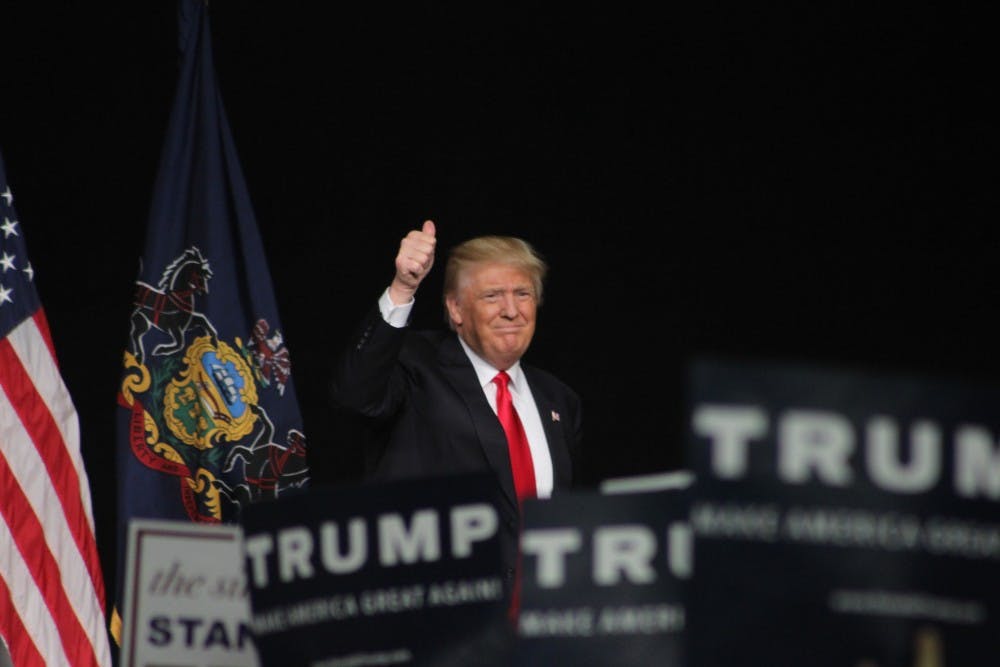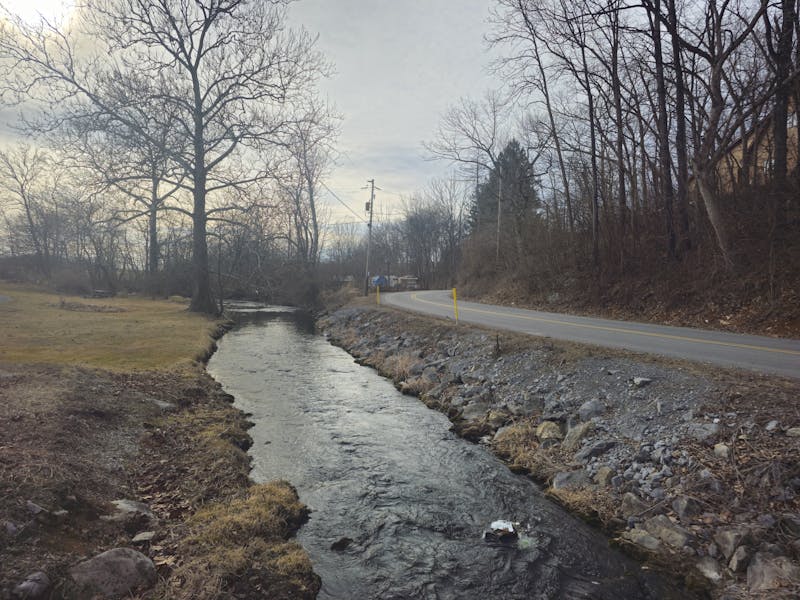Political outsider Donald Trump (R) won the presidential election last night, giving a victory speech at 3 a.m., and thanking rival Hillary Clinton (D) for calling him and conceding the contest.
President-elect Trump earned 276 electoral votes by Wednesday morning, securing the 270 needed to win. Clinton fell shy of the threshold, with 52 more votes needed. While some states, such as Michigan and New Hampshire are still too close to call, Clinton does not have a path to victory.
Votes are still being tallied, but Clinton is leading in the popular vote, beating Trump by about 200,000 cast ballots as of 9:30 a.m. The margin is less than half of what it was in the contested 2000 presidential election against Al Gore and George W. Bush.
Trump’s win puts the Republican Party back into the White House, but the party also captured the Senate and maintained a lead in the House of Representatives.
Pennsylvania hung in the balance for hours last night, but as the dust settled, Shippensburg University students woke up in a red state. Trump swelled a 1,000 vote lead to more than 60,000 votes throughout the early morning hours.
Pennsylvania Incumbent Senator Pat Toomey (R) held on to his office, besting rival Katie McGinty (D) by 2 percent of the vote. Also with a 2 percent margin, the Keystone State passed a constitutional amendment that will change the retirement age of state judges to 75.
Pennsylvania, a known battleground state, saw its share of close elections last night. The country was no stranger to neck-to-neck races, but the presidential election did not kick off that way.
Before 8 p.m. Trump had a significant lead over Clinton, receiving 24 electoral votes compared to Clinton’s three. West Virginia, Indiana and Kentucky red, while Clinton secured her single digit votes from Vermont.
Five minutes after 8 p.m. Clinton rose to 44 electoral votes, besting Trump by 13. Maryland, Delaware, New Jersey, the District of Columbia and Massachusetts went blue while Oklahoma turned red.
Trump took the lead 30 minutes later, sweeping Midwestern states. Results from Pennsylvania started coming in, with leads for Clinton and McGinty.
The Midwest largely turned red from North Dakota to Texas by 9:30 p.m., but Clinton picked up Illinois and then Connecticut from the Northeast. Pennsylvania leaned blue, but only a small fraction of votes were counted at that point. Nationally, Trump led by more than 30 electoral votes at 137-104, but about 300 were up for grabs.
Pennsylvania still edged toward Clinton with 55 percent of the vote in at 10:30 p.m. Clinton maintained a 5 percent lead over Trump, grabbing votes from the Pittsburgh and Philadelphia areas.
The race roared on past midnight with Trump surpassing Clinton by double-digit electoral margins. Approximately 70 percent of the vote was in, and Trump stood at 49 percent compared to Clinton’s 47 percent. Libertarian Party candidate Gary Johnson ranked third with 3 percent of the vote and Green Party candidate Jill Stein at just less than 1 percent.
Republicans secured 48 seats in the Senate, needing just three to reach a majority. The House of Representatives was swinging right with 11 seats needed, compared to Democrat’s 73 for a majority.
The presidential race narrowed in Pennsylvania to about 1,000 votes between Clinton and Trump at 12:20 p.m. Toomey bested McGinty with a 20,000 vote lead at this time, with just 5 percent of the vote left to be reported.
The fate of the presidency was too close to call as 1 a.m. rolled around. Eight states were yet to be called and Trump led by one percent in the popular vote. With Trump at 48 percent and Clinton at 47 percent, both candidates were polling with a minority of support from the electorate.
Clinton campaign chairman John Podesta announced at 2 a.m. Clinton would not make a concession speech that night, and told her supporters to go home.
While Clinton campaigners were headed to bed with no answers on the presidential election, the Republicans overtook the Senate. With 51 senators and majority of representatives, the Republican Party managed to control both houses of Congress.
Pennsylvania then moved to Trump’s camp and Maine was split, putting Trump at 266 electoral votes of the 270 necessary. Clinton still needed 52 votes, but only had 14 likely votes from left-leaning states of Minnesota and New Hampshire.
The Associated Press announced Trump was elected president at 2:30 a.m., though some media outlets held off as the race was to close for them to call.
Just before 3 a.m. Trump addressed a crowd of supporters, saying Clinton called him and conceded the election.
“It’s time for us to come together as one united people,” Trump said. “I’m reaching out to you for your guidance and help to unify our great country.”



The Slate welcomes thoughtful discussion on all of our stories, but please keep comments civil and on-topic. Read our full guidelines here.